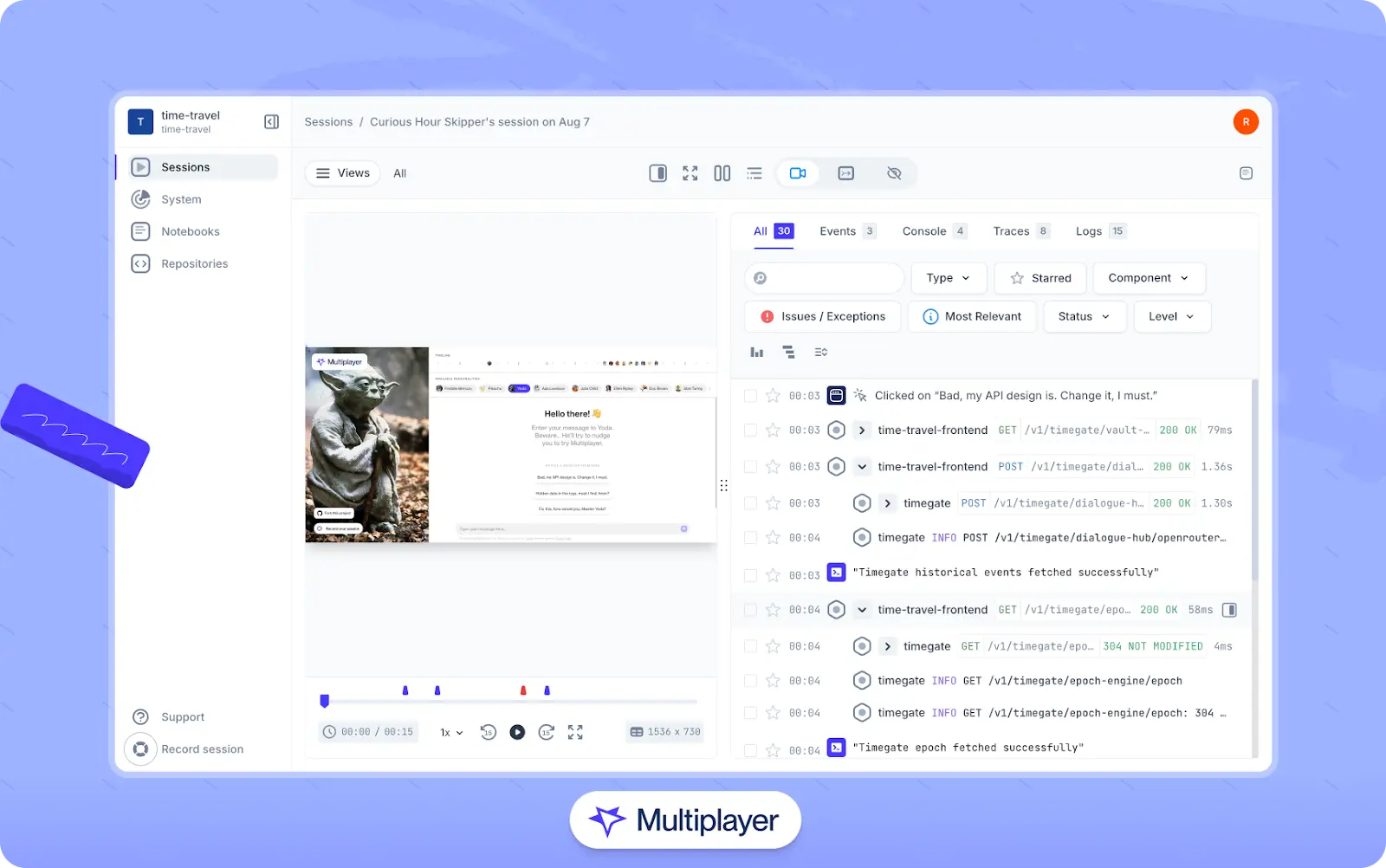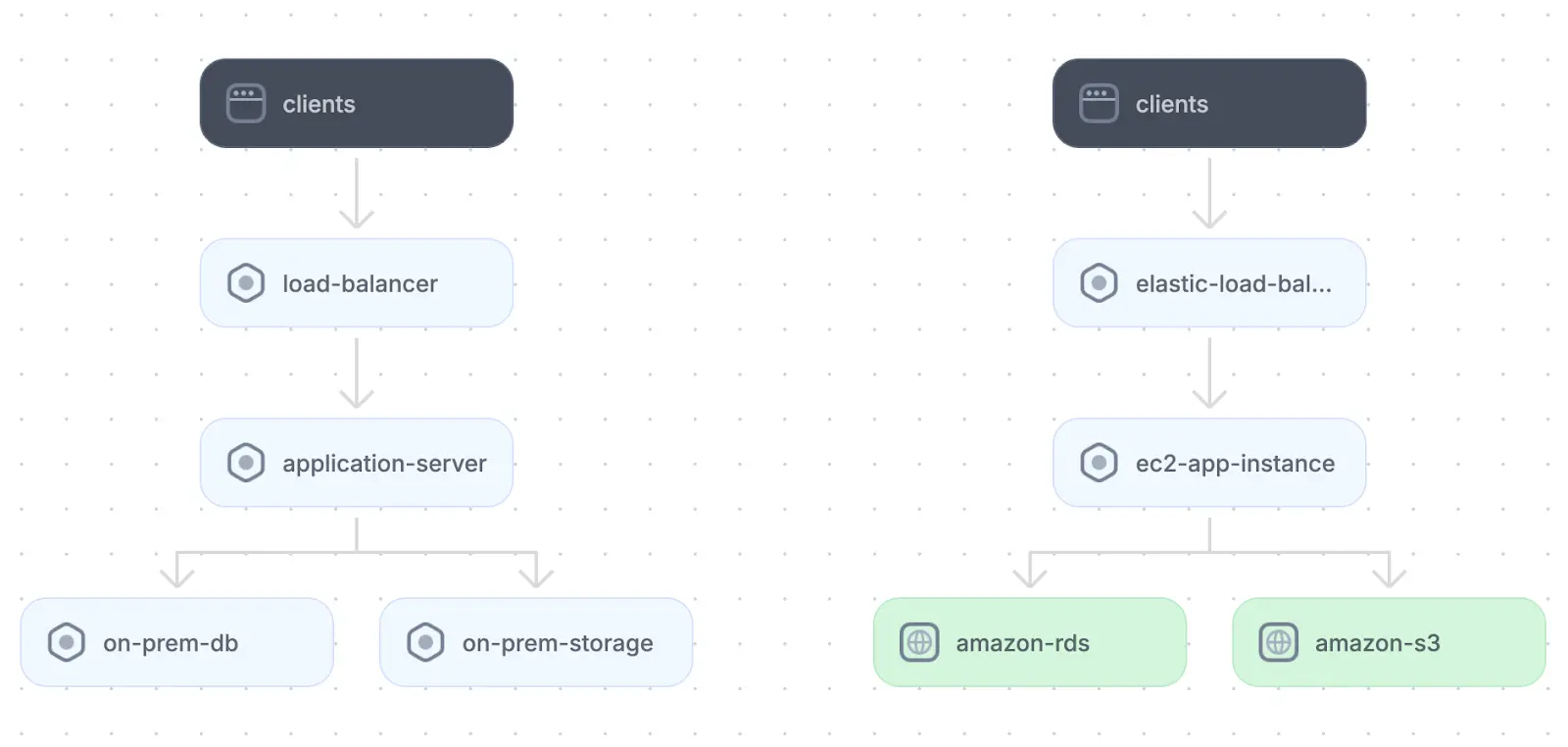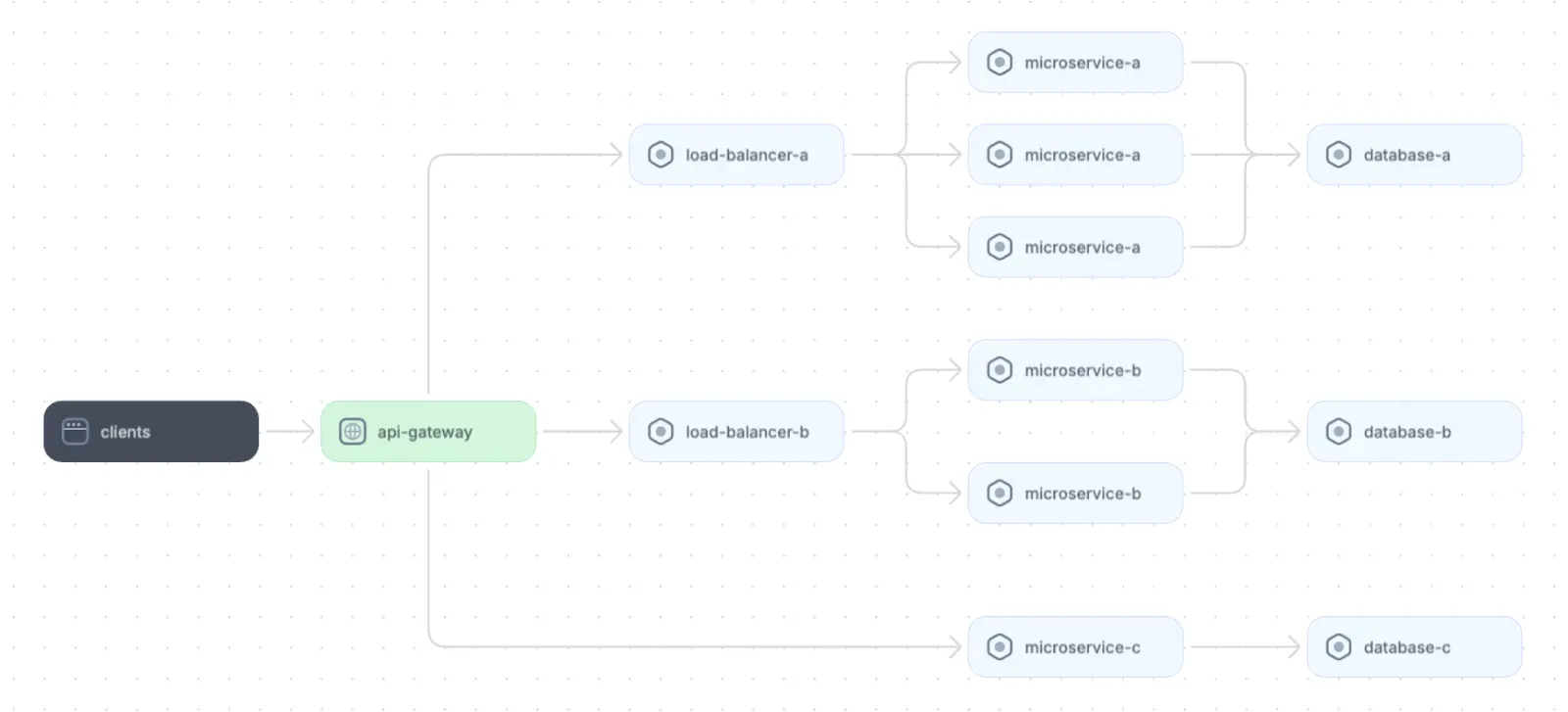Guide
Legacy Application Modernization: Tutorial & Examples
Table of Contents
A legacy application refers to an outdated or unmaintained software system supported by an infrastructure stack that an organization continues to use despite the availability of newer, more advanced alternatives. Legacy systems often support business needs but contain complex, embedded logic and lack modern features, compatibility with newer technologies, or vendor support.
Legacy application modernization is the process of replacing or upgrading legacy systems to meet modern standards. Modernization can be lengthy and involved. It can range from minor enhancements like integrating new modules or updating APIs to complete system overhauls, where developers rebuild or replace outdated software and hardware. In every case, organizations must carefully weigh modernization costs against the risks of continuing to use legacy systems.
In this article, you will gain a comprehensive understanding of the complexities and benefits of legacy system modernization. Expect to dive into real-world questions like whether to modernize a particular system, how to tackle technical debt, and which modernization approaches work best for different scenarios. By the end, you will have a clearer picture of how and when to modernize systems to help your organization stay agile, competitive, and ready to leverage technologies like cloud computing and artificial intelligence.
Summary of legacy application modernization concepts
The table below highlights important legacy application modernization topics discussed in this article.
| Concept | Description |
|---|---|
| Characteristics of systems that should be modernized | Prime candidates for modernization include systems that experience high maintenance costs, security vulnerabilities, performance issues, or are otherwise incompatible with modern technology standards or development practices. |
| When not to modernize | Modernization is only sometimes the answer. In some cases, the costs or risks outweigh the potential benefits. Stable systems that meet current business requirements and have low maintenance costs may not need updating. |
| Modernization and technical debt | Technical debt can slow development, increase maintenance costs, and create security risks. Modernization presents an opportunity to address technical debt by refactoring code, updating infrastructure, and implementing best practices. |
| Modernization techniques | Modernizing legacy systems can involve different techniques suited to different goals, constraints, and system requirements. Common approaches include rehosting (“lift and shift”), re-platforming, refactoring, rearchitecting, or rebuilding/replacing. Selecting the proper technique requires balancing cost, risk, and long-term value. |
Characteristics of legacy systems that should be modernized
Identifying systems that hinder business operations or technological progress is crucial for driving efficiency and innovation. This section explores the key characteristics that indicate when modernization is necessary, helping prioritize efforts where they can deliver the most value.
Business misalignment
Generally, any system that no longer aligns with the current or evolving business needs is a strong candidate for modernization. Like other systems, legacy systems are designed for specific requirements that may have shifted over time. As an organization’s goals, processes, and market demands evolve, legacy systems may fail to support these changes and become a bottleneck to growth and innovation.
For example, a legacy system may lack the ability to integrate with or support modern technologies such as cloud computing, data analytics, and artificial intelligence. If such technologies are critical to business development, the legacy system becomes a significant barrier to progress.
High maintenance costs
One of the most apparent indicators that a system needs modernization is the burden of high maintenance costs. Over time, legacy systems often become increasingly expensive to support due to outdated hardware, software dependencies, and the need for specialized expertise. High maintenance costs strain budgets and divert resources from innovation and strategic initiatives. Modernizing these systems can reduce long-term expenses, improve reliability, and free up resources to focus on growth and improvement.
Performance issues
Legacy systems often struggle to meet the performance demands of modern businesses. These problems can manifest as slow processing speeds, frequent downtime, or an inability to scale with growing workloads. Systems with persistent performance challenges can hinder productivity, frustrate users, and negatively impact customer experiences. Teams should modernize these systems into a more robust and scalable solution equipped to handle the dynamic needs of modern organizations.
Security vulnerabilities
Legacy systems that pose significant security risks are critical candidates for modernization. As technology evolves, so do cyber threats, and older systems are typically ill-equipped to defend against them. Outdated software and hardware often lack essential updates, which makes them easy targets for attackers and exposure to data breaches, compliance violations, and operational disruptions. Modernizing these systems can significantly reduce security risks by introducing advanced protective measures, ensuring compliance with current standards, and fortifying the organization’s defense against evolving cyber threats.
When not to modernize legacy applications
Legacy application modernization is not always advisable. Understanding when not to modernize can save time, resources, and unnecessary disruption. While it can be tempting to modernize older systems to utilize new trends and technologies, it is essential to keep modernization decisions grounded in business needs. Let’s take a look at six characteristics of systems that should not be modernized.
Stable and sufficient functionality
Modernization is likely not a priority when a legacy system performs reliably and meets current business needs without causing inefficiencies or operational issues. Indeed, if a system consistently delivers the required functionality without interruptions or problems, the risks and costs of modernizing it may outweigh the potential benefits.
For example, consider a system that supports a stable, critical business process, such as payroll, transaction processing, or airline or hotel reservations. Such a system provides value simply by maintaining its reliability without failure or requiring constant updates. Introducing changes to such a system could inadvertently disrupt its stability, creating previously nonexistent issues. In these cases, maintaining the status quo can often be the more prudent choice to reduce risks and allow resources to be directed toward other concerns.
Low maintenance and operational costs
Modernization is often driven by the need to reduce the expenses of maintaining and operating legacy systems. However, modernization may not be justified when a system incurs minimal upkeep costs and operates efficiently within budget. Systems with low maintenance requirements typically do not burden IT resources or organizational finances, allowing them to continue functioning effectively without significant intervention. In such cases, the investment needed for modernization might yield little return compared to its cost.
Planned decommissioning or replacement
Modernization efforts may not be justified for systems nearing the end of their lifecycle and slated for decommissioning or replacement. When a system is already scheduled to be retired, investing in significant upgrades or overhauls offers little return on investment. In such cases, temporary fixes or minimal updates can maintain the system’s functionality until the new solution is fully implemented.
Integration independence
Legacy systems operating independently without integrating newer technologies or systems may not necessitate immediate modernization. If a system functions effectively in isolation, with no need to exchange data or processes with other platforms, it can often continue functioning without significant drawbacks.
For instance, a legacy system used for a specific, self-contained task–such as internal archiving or localized processing–might remain operational without impacting the broader IT infrastructure. If the system continues functioning without hindering overall business operations or strategic goals, modernization may not be worth the lift.
Resource constraints
This final characteristic applies to an organization rather than an individual system. Modernizing a legacy system requires significant time, budget, and expertise investments. When an organization faces resource constraints, attempting to modernize without adequate preparation can lead to costly failures and missed objectives. If the necessary funding, skilled personnel, or time to plan and execute a modernization effort are lacking, it may be prudent to delay the project until conditions improve.
For instance, rushing into a modernization initiative without proper resources often results in incomplete implementations, overlooked critical details, or inadequate testing. These pitfalls can introduce new inefficiencies and technical debt rather than solving existing problems. Similarly, underfunded projects risk stalling mid-way, wasting already invested time and resources.
Full-stack session recording
Learn moreRisks of unnecessary legacy application modernization
Modernizing a legacy system without clear justification can lead to unintended consequences that outweigh potential benefits. Below are the key risks associated with unnecessary modernization efforts:
| Risk | Description |
|---|---|
| High costs without adequate ROI | Modernization projects can be expensive, involving significant time, resources, and technology investments. If the system already meets business needs, the financial return on modernization may not justify the expense. |
| Disruption to business operations | Transitioning to a modernized system can disrupt workflows, introduce downtime, or cause temporary inefficiencies. Employees may also face challenges adapting to new processes or tools, affecting productivity. |
| Loss of stability and reliability | Well-functioning legacy systems are often stable; unnecessary changes could introduce bugs, compatibility issues, or unexpected failures. New systems may take time to reach the reliability of the legacy version. |
| Overcomplication of IT infrastructure | Unnecessarily modernizing systems can lead to over-engineered solutions, adding complexity to the IT environment. This can make maintenance more difficult and increase the risk of integration challenges. |
| Resistance from stakeholders | Employees and stakeholders accustomed to the legacy system may resist change, leading to adoption challenges or reduced morale. Frustration over perceived unnecessary efforts can undermine trust in IT decision-making. |
| Security and compliance risks | If not implemented correctly, introducing a new system without a clear need can create unforeseen vulnerabilities or compliance issues. Legacy systems may already have robust security mechanisms disrupted during unnecessary updates. |
Modernization should be a strategic decision based on clear benefits and business needs. Unnecessary efforts can lead to wasted resources, operational risks, and stakeholder dissatisfaction. Before embarking on any modernization initiative, it is critical to thoroughly evaluate the current system’s performance, align goals, and conduct a cost-benefit analysis.
Legacy application modernization and technical debt
The relationship between modernization and technical debt is complex and interdependent. While modernization often aims to address and reduce technical debt, the two are not synonymous. Modernization is a strategic effort to improve systems, while technical debt is the sum of the accumulated consequences of past decisions and their trade-offs. Importantly, poorly executed modernization can introduce inadvertent technical debt if rushed or poorly planned. Therefore, successful modernization requires a clear strategy to tackle existing technical debt while avoiding the creation of unforeseen consequences.
Let’s take a look at this relationship more closely.
What is technical debt?
Technical debt is an inevitable consequence of developing or maintaining any system. While it can arise unintentionally from suboptimal technical decisions or poor coding practices, it is often accumulated knowingly and strategically when designing a system or prioritizing development tasks. In legacy systems, technical debt often appears as sprawling architectures, outdated code, reliance on obsolete technologies, or poor documentation.
Modernization as a debt reduction tool
Architectural, code-level, test, and documentation debt can slow development, raise maintenance costs, and limit scalability and adaptability. Modernization is a key strategy for reducing different types of technical debt. It addresses technical debt’s root causes by refactoring outdated components, adopting more efficient technologies, and streamlining workflows.
Effective modernization also improves system performance and maintainability while lowering operational costs. For example, transitioning to scalable solutions like cloud platforms, microservices, and modern programming languages replaces obsolete technologies and creates a more flexible and reliable infrastructure.
When modernization adds to technical debt
While modernization can reduce technical debt, poorly executed efforts often inadvertently create new debt. This commonly arises when developers lack a comprehensive understanding and visibility into the system, which can arise from insufficient observability practices and/or missing, fragmented, or outdated documentation. Without adequate knowledge of what is already in place, the team may make critical errors, overlook important dependencies, or implement “solutions” that fail to address the underlying issues that made modernization necessary in the first place.
To avoid this, organizations must take an approach to modernization that is grounded in real system behavior. Start by mapping application dependencies and ensuring that your system is well-documented and understood. If your system is not already instrumented with an observability framework like OpenTelemetry, doing so at this stage can provide useful data to inform decisions on where and how to modernize.
Another way to gain visibility is to capture and analyze real user interactions across frontend, backend, and infrastructure layers. Tools like Multiplayer full stack session recordings can help developers inspect different user flows and identify subtle issues that might degrade performance or impact critical operations.
Multiplayer full stack session recordings
Interact with full-stack session recordings to appreciate how they can help with debugging
EXPLORE THE SANDBOX(NO FORMS)
Once modernization begins, coordination is crucial. Without clear communication channels and active knowledge sharing, modernization becomes tedious, chaotic, and expensive. Beyond introducing technical debt, poorly coordinated efforts can lead to redundant work, unnecessary features, and development bottlenecks as teams attempt to work with tightly-coupled components concurrently. Multiplayer’s notebooks support this phase by helping teams document system behavior, test and debug new API integrations, and stay aligned through shared, contextualized documentation.
Finally, the effort invested in documentation continues to pay dividends post-modernization. As the system evolves, up-to-date documentation ensures that every team member understands the architecture, design rationale, and how to extend or modify the system safely. It also streamlines onboarding by giving new engineers a reliable source of truth, which reduces reliance on tribal knowledge and helps them contribute more quickly.
Balancing legacy application modernization and technical debt
Organizations should take a strategic approach to ensure modernization reduces technical debt rather than adding to it. Prioritize systems with the highest technical debt and those with significant inefficiencies or critical business impact for the most substantial improvements.
Modernization should be implemented in incremental phases to reduce risk and complexity, allowing adjustments and thorough testing at each stage. Best practices–such as clean coding, robust testing, and comprehensive documentation–ensure the new system is maintainable, scalable, and aligned with modern standards. After modernized solutions are deployed, continuous monitoring is crucial to prevent new technical debt.
Legacy application modernization techniques
Different organizations’ scope and approaches to modernization can vary widely. Some may benefit from small incremental updates, while others require complete system overhauls. The precise approach should be tailored to address specific challenges, such as outdated technology, security vulnerabilities, or poor performance.
Choosing the right modernization technique requires a deep understanding of the system's technical state, its role within the organization, and the business's long-term goals. In other words, businesses must first understand what is already in place before deciding how to alter an existing system.
While gaining insights into legacy systems is often tedious and time-consuming, tools like Multiplayer can assist. For example, Multiplayer’s system dashboard leverages data collected via OpenTelemetry to automatically discover, list, and create a map of all components, APIs, dependencies, platforms, and environments within your software system. This information is also automatically updated every time the real-world system is changed.
Once a comprehensive understanding is established, different modernization techniques can be utilized. Let’s take a look at four common legacy application modernization techniques.
Rehosting ("lift and shift")
Rehosting, often called “lift-and-shift,” is one of the most straightforward approaches to modernizing legacy systems. This technique involves migrating an existing system to a new environment with minimal changes, typically just adjusting the infrastructure to suit the new environment. The system's code remains largely untouched.
When a system is rehosted, it is transferred from its current environment–often an on-premises infrastructure or outdated platform–to a more modern one, such as a cloud platform like AWS, Azure, or Google Cloud. Alternatively, it may involve transferring from one on-premises solution to another that leverages updated physical or virtualized servers for improved elasticity and cost-efficiency.
The diagram below shows two architectures for the same application. As you can see, the on-premises architecture on the left is shifted to a cloud solution with minimal design changes.

Differences between an on-premises and rehosted, cloud-based architecture
One click. Full-stack visibility. All the data you need correlated in one session
RECORD A SESSION FOR FREEIt is worth noting that such shifts are only classified as rehosting when they require only relatively few changes to application code, such as low-touch migrations to fixed/reserved on-premises instances or cloud-hosted virtual machines. If more extensive changes are required, the modernization would likely fall into a different category (such as replatforming or rearchitecting).
Rehosting is ideal for systems that have stable functionality and adequately meet business needs but are hosted on outdated or expensive infrastructure. It is particularly well-suited for organizations seeking a quick modernization solution with minimal risk of disrupting ongoing operations. Rehosting is also a good choice for systems not yet ready for more comprehensive modernization approaches due to time, budget, or resource constraints.
In short, rehosting is a practical entry point for organizations looking to modernize legacy systems without significant disruption.
Replatforming ("lift, tinker, and shift")
Like rehosting, replatforming involves moving a legacy system to a new platform or infrastructure. Similarly to rehosting, this is often a migration from on-premises hardware to cloud infrastructure.
However, replatforming also includes minor changes to the codebase that optimize the system for modern technology. Because replatforming involves modifying ("tinkering with") the codebase, it is known as the "lift, tinker, and shift" approach. In addition to moving the system to a new environment, it can involve steps such as:
- Modifying the system to run more efficiently on cloud-based services
- Optimizing for scalability
- Integrating with new tools or services
Re-platforming is a suitable choice for legacy systems that require an upgrade to a more modern infrastructure without a complete overhaul of their architecture or code. It is ideal for systems constrained by outdated or inefficient platforms but with core functionality that aligns with business needs. This approach is also practical when the system requires scalability, performance, and security improvements, but a full rearchitecting or refactoring is not yet feasible.
Refactoring
Refactoring is the process of restructuring existing code without changing its external behavior. It improves code readability, maintainability, and efficiency. While it does not necessarily modernize a system in the sense of introducing new technologies or features, it lays the groundwork for future modernization efforts by reducing technical debt and making the system more adaptable. As an example, consider the code block below:
def calculate_total_price(price, quantity, tax_rate):
total = price * quantity
tax = total * tax_rate
total_price = total + tax
return total_price
def calculate_discounted_price(price, quantity, discount_rate):
total = price * quantity
discount = total * discount_rate
discounted_price = total - discount
return discounted_priceIn the code above, the logic to calculate the total price (or discounted price) is repeated in both functions, leading to redundancy. The refactored version below includes a single function that calculates the total price and can handle optional discounts. This reduces redundancy and makes the code easier to maintain.
def calculate_total_price(price, quantity, tax_rate, discount_rate=0):
total = price * quantity
total_price = total + (total * tax_rate) - (total * discount_rate)
return total_priceRefactoring is ideal for systems with stable functionality but encumbered by outdated or inefficient code, making them difficult to maintain, scale, or integrate with modern technologies. It is particularly suited for legacy systems that have accumulated technical debt over time, where the underlying architecture may no longer support current business needs or technological advancements.
Rearchitecting
Rearchitecting involves redesigning the system's core architecture to improve performance, scalability, and adaptability to modern technologies. Unlike simple updates or migrations, rearchitecting fundamentally alters how the system is structured, often by replacing outdated monolithic designs with contemporary, flexible architectures like microservices or serverless computing.

An example of a microservices architecture
Rearchitecting is ideal when a legacy system can no longer meet the evolving needs of the business, often due to significant limitations in scalability, flexibility, or integration with modern technologies. This approach best suits systems with outdated or fragmented architectures, making implementing new features or supporting growth difficult.
Rebuilding
Rebuilding, also known as "re-engineering," is the most comprehensive approach to legacy system modernization. It involves creating an entirely new system from the ground up to replace an outdated one. This method is often chosen when the existing system has reached a technical “point of no return,” meaning the current system has become so outdated, inefficient, or difficult to maintain that it would be more practical to start from scratch and rebuild it rather than continue trying to fix or upgrade it.
Rebuilding is typically the most resource-intensive modernization approach, requiring significant time, budget, and expertise. However, it offers the potential for a fully optimized system that can provide long-term benefits, including improved performance, scalability, security, and the ability to integrate with modern technologies and business processes.
Stop coaxing your copilot. Feed it correlated session data that’s enriched and AI-ready.
START FOR FREEFinal thoughts
Legacy system modernization upgrades outdated software and hardware to meet current business demands, leverage modern technologies, and address challenges such as high maintenance costs, security vulnerabilities, and poor performance. This transformation can take many forms, from minor updates and integration enhancements to complete system replacements. Modernization improves system efficiency and scalability, reduces technical debt, enhances security, and supports innovation. Organizations can ensure smoother operations, greater agility, and a strong foundation for future growth by carefully evaluating systems, prioritizing efforts, and selecting the proper modernization techniques.


